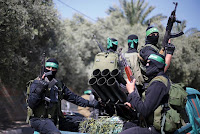Origin and History
The Indian Mujahideen emerged in the mid-2000s as a result of the ideological radicalization of a segment of Indian Muslim youth. The group is believed to have links with the Students Islamic Movement of India (SIMI) and Lashkar-e-Taiba. IM adopted a violent approach to promote its extremist ideology, targeting civilians and security forces alike.
Goals
The primary goal of the Indian Mujahideen is to establish an Islamic state governed by Sharia law within India. The group sees itself as a defender of the rights of Indian Muslims and seeks to challenge the Indian government's authority through violent means.
Notable Actions
Serial Bomb Blasts: IM gained notoriety through its involvement in several coordinated bomb blasts in various Indian cities, resulting in numerous casualties.
2008 Delhi Serial Blasts: One of the most devastating attacks attributed to IM, the 2008 Delhi blasts targeted crowded markets, leaving a trail of destruction.
Notable Events
Batla House Encounter: In 2008, a controversial police encounter in Batla House, Delhi, resulted in the death of two IM members and the arrest of another.
Banned Organization: The Indian government banned the Indian Mujahideen in 2010, recognizing its threat to national security.
Potential Future Threat
Recruitment and Radicalization: The Indian Mujahideen's ability to radicalize and recruit disaffected youth remains a significant concern, potentially fueling future attacks.
Network Resilience: The group's elusive network and connections could facilitate its resurgence despite law enforcement efforts.
Soft Targets: The IM's strategy of targeting densely populated areas and public spaces increases the potential for mass casualties and fear propagation.
Collaborations: Potential collaborations with international extremist groups might amplify IM's reach and capabilities.
Conclusion
The Indian Mujahideen's presence underscores the challenges of combating homegrown extremism. Its origin, history, goals, and actions paint a portrait of an organization willing to employ violence to achieve its objectives. The potential for future threats requires continuous vigilance, efforts to counter radicalization, and enhanced intelligence sharing to ensure the safety and security of India and its citizens. Understanding the complex dynamics of IM is vital in addressing the persistent challenge of domestic terrorism and safeguarding national stability.

















